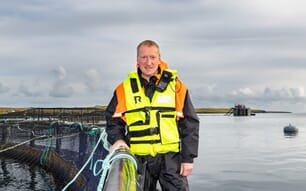This science-based standard is the world’s most credible and recognized standard for environmentally sustainable wild-caught seafood. The Bering Sea, Aleutian Islands and Gulf of Alaska Pollock fisheries have been certified to this standard since 2005.
Alaska Pollock is among the top five most consumed fish per capita in the US.
Its mild flavor and flaky texture make it popular for consumers around the world. Primary markets for Alaska Pollock products are the US, Europe (where it is Germany’s most consumed fish) and Japan.
The US and Europe are the main markets for fillet-type products, which are used for fish and chips, fish tacos, fish sandwiches and fish sticks. Japan is the principal market for Alaska pollock surimi, which is used as the primary ingredient in a wide range of surimi seafood products (kamaboko).
Jim Gilmore, At-sea Processors Association, the fishery client for the Alaska Pollock reassessment emphasizes: “We are proud to be one of the 10 fisheries globally to be certified as meeting the MSC’s rigorous sustainability standard three times. Alaska Pollock continues to earn among the highest certification scores of any fishery in the MSC program. This re-certification reaffirms the Alaska Pollock industry’s continued leadership in responsible fishing.”
The 2016 Alaska Pollock season will begin on January 20. A federal fishery advisory body, the North Pacific Fishery Management Council, recommended to the US Secretary of Commerce a precautionary 1.34 million metric ton annual quota for the Bering Sea/Aleutian Islands, which is several hundred thousand tons less than federal fishery scientists determined can be sustainably harvested.
The Gulf of Alaska Pollock fishery is set at 257,872 metric tons, a 30 per cent increase from the 2015 quota and within the safe harvest level determined by federal fishery scientists.
Pat Shanahan, Genuine Alaska Pollock Producers, the marketing trade association for Alaska Pollock said: “The fishery management system is known for its conservative management practices, so these quota increases indicate an exceptionally healthy Alaska Pollock fishery in the Bering Sea and Gulf of Alaska. Seafood buyers and consumers can rest assured that Alaska Pollock is one of the world’s largest and most sustainable fisheries.”
The internationally recognised blue MSC ecolabel will continue to assure consumers that Alaska Pollock products can be traced back to a certified sustainable source.
Brian Perkins, MSC regional director - Americas, said: "The MSC’s vision is for oceans to be teeming with life for future generations. Alaska Pollock has successfully created and maintained new markets, especially in the US and Europe, over the past decade. We are extremely pleased to see this fishery succeed in the MSC process yet again.”
The independent assessment of the Alaska Pollock fisheries was conducted by MRAG Americas, an accredited third-party conformity assessment body. MRAG Americas assembled a team of fishery science and policy experts to evaluate the fishery according to the three principles of the MSC Fisheries Standard: the health of the stock; the impact of fishing on the marine environment; and the management of the fishery. The MSC process is open to stakeholders and all results are peer reviewed.


